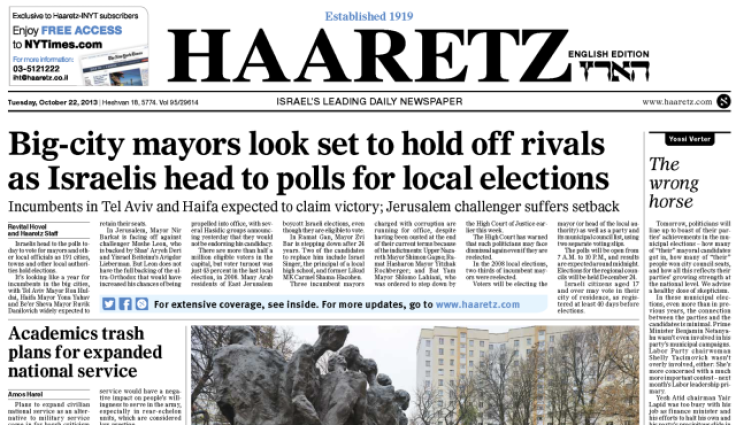Israel-Gaza News Reinforces Biases: Social Networks Personalize Propaganda, Says Data Scientist

Data-driven news helps readers get more of what they want, but during times of polarizing crises like the Israel-Gaza conflict, that’s not necessarily a good thing.
Gilad Lotan, the chief data scientist for the New York VC firm Betaworks, sought to learn where people on both sides of the conflict are getting their news, and the results bolstered the growing belief that more and more news consumers choose media sources that reaffirm their pre-existing beliefs. The phenomenon is sometimes referred to as “selective exposure,” and experts say it’s growing more pronounced as algorithms become better at learning our preferences and tailoring the content we see on social networks accordingly.
Here’s how Lotan explains it in a post on Medium, where he discussed the results of a study in which he looked at Twitter posts, connections and media preferences from people on both sides of the issue:
“As we construct our online profiles based on what we already know, what we’re interested in, and what we’re recommended, social networks are perfectly designed to reinforce our existing beliefs. Personalized spaces, optimized for engagement, prioritize content that is likely to generate more traffic; the more we click, share, like, the higher engagement tracked on the service. Content that makes us uncomfortable is filtered out.”
To assess media preferences, Lotan looked at tweets responding to the shelling incident last week at the UNRWA school in Beit Hanoun, in the northern Gaza Strip. The incident divided news consumers, with some believing reports of 15 Palestinians being killed by Israeli fire, and others accepting the Israel Defense Forces’ explanation that Israel was not responsible for the deaths. Lotan compiled the divided Twitter accounts in a colorful infographic that also shows media outlets and journalists in their networks.
Not surprisingly, pro-Palestinian tweeters tended to get their news from sources that were sympathetic to their beliefs -- BBCWorld, Glenn Greenwald, Gaza Global to name a few. On the other side, we see outlets like Times of Israel, the Jerusalem Post, etc. Interestingly, one news outlet falls closer to the center than all the rest: the Israeli newspaper Haaretz, which publishes in both Hebrew and English. “Compared to all other nodes in the graph, Haaretz is most likely to spread throughout the wider network,” Lotan wrote. “It has the most potential for bridging across biases and political barriers.”
But as Gideon Lichfield at Quartz pointed out on Tuesday, Haaretz, which was hit by a round of serious layoffs last year, is not exactly the picture of health. “Unfortunately, Ha’aretz is struggling,” Lichfield wrote, “squeezed both by the general decline of print newspapers and the growing rightward tilt of Israeli opinion.”
Haaretz, for its part, was happy to tout its pivotal position with a post on its website Tuesday detailing Lotan’s findings.
To read more, check out Lotan’s full post here.
© Copyright IBTimes 2024. All rights reserved.












